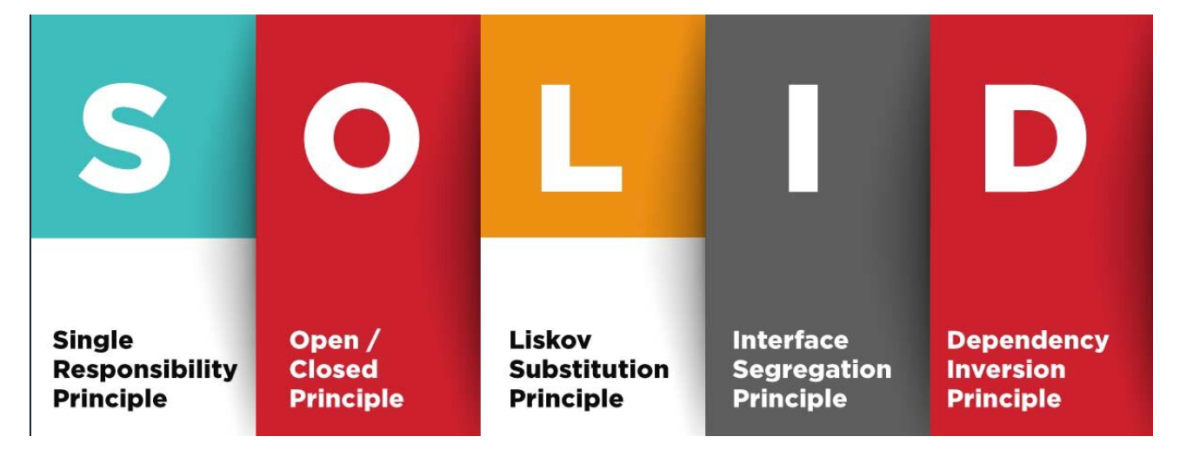Understanding SOLID Principles in React Functional Components
The SOLID principles are five design principles that improve the readability, scalability, and maintainability of software. They were originally defined in the context of object-oriented programming, but they apply just as well to React and functional programming.
Let’s dive into how each SOLID principle can be applied to React Functional Components.
1. Single Responsibility Principle (SRP)
Definition: A class or function should have only one responsibility. It should do only one thing, and do it well.
In the context of React, a component should be responsible for rendering specific UI or managing specific logic, not both. Let’s look at an example.
Example:
Bad Example (Violating SRP):
function UserProfile({ userId }) {
const [userData, setUserData] = useState(null);
useEffect(() => {
fetch(`https://api.example.com/user/${userId}`)
.then((response) => response.json())
.then((data) => setUserData(data));
}, [userId]);
return (
<div>
<h1>{userData?.name}</h1>
<p>{userData?.email}</p>
</div>
);
}
Here, the UserProfile component is handling both fetching the data and displaying the UI, violating the Single Responsibility Principle.
Good Example (Following SRP):
function UserProfile({ user }) {
return (
<div>
<h1>{user.name}</h1>
<p>{user.email}</p>
</div>
);
}
function UserProfileContainer({ userId }) {
const [userData, setUserData] = useState(null);
useEffect(() => {
fetch(`https://api.example.com/user/${userId}`)
.then((response) => response.json())
.then((data) => setUserData(data));
}, [userId]);
return userData ? <UserProfile user={userData} /> : <p>Loading...</p>;
}Benefits:
- Easier to Understand: Clearer and more straightforward.
- Easier to Maintain: Bugs are easier to track down and fixes tend to be simpler because changes are localized to specific functionalities.
- Reduced Impact of Changes: Changing the behavior of a component that follows SRP is less likely to affect other components.
2. Open/Closed Principle (OCP)
Definition: Software entities (classes, functions, modules) should be open for extension but closed for modification. This means you should be able to add new functionality without changing the existing code.
In React, you can achieve this by making components more generic and extendable, so you can enhance or reuse them without modifying their core.
Example:
Bad Example (Violating OCP):
function Button({ text }) {
return <button>{text}</button>;
}
If you want to add a new feature, like handling click events or passing different styles, you’d have to modify the Button component.
Good Example (Following OCP):
function Button({ text, onClick, style }) {
return <button onClick={onClick} style={style}>{text}</button>;
}
Now, we can extend the button’s functionality by passing different props without modifying the core component.
<Button text="Save" onClick={handleSave} style={{ color: 'blue' }} />
<Button text="Cancel" onClick={handleCancel} style={{ color: 'red' }} />
The Button component is now open for extension through props, but its core remains closed for modification.
Benefits:
- Enhanced Scalability: New functionalities can be added with minimal changes to existing code.
- Reduced Risk: Extending systems without modifying existing code means there is less chance of introducing new bugs into the existing system.
- Promotes Reusability: Components can be reused because they can be extended to fit new situations without needing to be modified.
3. Liskov Substitution Principle (LSP)
This means you could be able to replace your base component with your extended component without any issues.
Example:
Bad Example (Violating LSP):
function Rectangle({ width, height }) {
return <div style={{ width, height }} />;
}
function Square({ size }) {
return <Rectangle width={size} height={size} />;
}
While this looks fine, Square inherits from Rectangle, but logically this doesn’t make sense. You might end up with unexpected behavior when switching them.
Good Example (Following LSP):
function Shape({ width, height }) {
return <div style={{ width, height }} />;
}
function Rectangle({ width, height }) {
return <Shape width={width} height={height} />;
}
function Square({ size }) {
return <Shape width={size} height={size} />;
}
Now, both Rectangle and Square are derived from the more general Shape component, making them interchangeable and adhering to LSP.
Benefits:
- Increased Reliability: Ensures that a derived class/function does not affect the behavior and expectations of the base class/function.
- Improved Code Robustness: Promotes the correctness of any hierarchies of inheritable classes/functions.
- Interchangeability: Components can be replaced with their derivatives without affecting the functioning of the system.
4. Interface Segregation Principle (ISP)
Clients should not be forced to depend on methods they do not use. In React, this means you should avoid creating components with too many props that force consumers to provide unnecessary data.
Example:
Bad Example (Violating ISP):
function UserSettings({ showProfile, showNotifications, showPrivacy, userData }) {
return (
<div>
{showProfile && <UserProfile user={userData} />}
{showNotifications && <Notifications />}
{showPrivacy && <Privacy />}
</div>
);
}
Here, a component consuming UserSettings needs to manage multiple props that might not be necessary.
Good Example (Following ISP):
function UserProfileSettings({ user }) {
return <UserProfile user={user} />;
}
function NotificationSettings() {
return <Notifications />;
}
function PrivacySettings() {
return <Privacy />;
}Now, each settings component is focused on its responsibility, and consumers don’t have to deal with unnecessary props.
Benefits:
- Reduced Side Effects: Changing the behavior of a component that’s used by many other components will have fewer side effects.
- Increased Cohesion: This leads to a more focused and narrow interface that promotes cohesion.
- Easier Evolution: Systems are easier to refactor, change, and redeploy.
5. Dependency Inversion Principle
Definition: High-level modules should not depend on low-level modules. Both should depend on abstractions. In React, you can use context or dependency injection patterns to follow DIP.
Example: Bad Example (Violating DIP):
import React, { useEffect } from 'react';
import { useDispatch, useSelector } from 'react-redux';
import Loader from './Loader'; // Assuming you have a Loader component
export default function ProfileScreen() {
const dispatch = useDispatch();
const user = useSelector((state) => state.user);
useEffect(() => {
dispatch(fetchUserDataAction());
}, []);
if (!user) {
return <Loader />;
}
return (
<>
<Text>{user.name}</Text>
<Text>{user.email}</Text>
</>
);
}
Good Example (Following DIP):
import React, { useEffect } from 'react';
import Loader from './Loader'; // Assuming you have a Loader component
import useCustomHook from './useCustomHook'; // Assuming the custom hook is in a separate file
export default function ProfileScreen() {
const { user, fetchUserData } = useCustomHook();
useEffect(() => {
fetchUserData();
}, []);
if (!user) {
return <Loader />;
}
return (
<>
<Text>{user.name}</Text>
<Text>{user.email}</Text>
</>
);
}
Custom Hook (useCustomHook) Code
import { useDispatch, useSelector } from 'react-redux';
function useCustomHook() {
const dispatch = useDispatch();
const user = useSelector((state) => state.user);
function fetchUserData() {
dispatch(fetchUserDataAction());
}
return {
fetchUserData,
user
};
}
export default useCustomHook;
Benefits:
- Flexibility: Higher-level modules remain unaffected by changes in lower-level modules and details.
- Decoupling: Promotes loose coupling between the code components, enhancing reusability and flexibility.
- Easier Testing: Independent high-level components can be tested easily in isolation from other components.
Conclusion
The SOLID principles provide a robust foundation for building maintainable and scalable applications. In the world of React Functional Components, these principles help you break down your UI into reusable, flexible, and independent components.
By adhering to these principles, you’ll improve the structure and clarity of your code, making it easier to extend, test, and debug.



